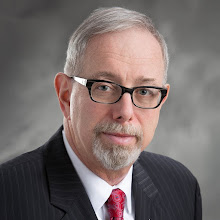This may come as a total shock to some of my readers, but even here, in the USA, the greatest country EVER, there are poor people. For the purposes of this blog post, it doesn’t matter why some Americans are poor. It is irrelevant as to whether the poor have had access to help or if they have abused the programs designed to lift them from poverty. It doesn’t even matter if there aren’t enough jobs or if they are too lazy to work.
I simply need for you to admit that there are poor people. Nod your head if you are with me.
Great. Now that we all accept that there are poor amongst us, we are no longer capable of pretending that they don’t exist. They do exist and the poor – adults and children – have health care needs. They can’t help it. They are human. The poor get sick. Their children suffer injuries.
Who pays for the health care of the poor? We do. We pay in the higher taxes that fund Medicaid. Our costs for doctors’ visits, hospital stays, and major testing are inflated to help cover the costs of the uninsured and the lower reimbursement rate of Medicaid. And hospitals bear the burden of “charity” care.
Medical providers may not like Medicaid, where their payments are a political football, but some compensation is better than none. That’s why our major local hospitals are counting on the Medicaid expansion of the Patient Protection and Affordable Care Act (PPACA). The possibility of extending coverage to 133% of the federal poverty level, which is about $30,000 for a family of four, would protect a lot of people.
Two other key elements: The PPACA adds childless adults to Medicaid, people usually not covered by this program. And, in an effort to encourage more primary care doctors to accept Medicaid patients, family doctors will now be paid at the Medicare rate.
The recent Supreme Court ruling made that expansion optional. Some states may participate. Some may not. Governor Kasich is still weighing his options. There are reasons, beyond the political, for each state to participate or to pass on this program.
The negatives are easy: Yes, the federal government is committed to covering the bulk of the initial cost, but what happens if the money stops? Can the federal government, regardless of who is in the White House, be counted on to honor this obligation? History casts doubts on Congress’s willingness to fund Medicaid, cut expenses, or resolve issues. Worse, the money, if it does come, isn’t forever. No one really knows how much this will cost the states after 2020.
Another issue is the increase in pay to primary care physicians. There was a real interest in funding this provision when the Democrats controlled the House of Representatives. Today, none at all. If this is initiated and funding for this part of the program ends, can the Ohio legislature, for example, screw the Cleveland Clinic and cut physician compensation? Congress budgeted $11 Billion for 2013 and 2014. It takes a willing Congress to allocate another penny.
It is important to remember that all cost estimates are, at best, guesses. New diseases, new treatments, new rules, and greed will all affect the final taxpayer outlay. Did anyone predict the AIDS epidemic in 1980 and the costs associated with the treatments? New and expensive medications and treatments are being developed here, in Cleveland, and around the world. It is impossible to predict, with certainty, the costs for care three, four, or eight years from now. We are writing Blank Check commitments.
Rule changes must also be a major concern. Did any member of the House or Senate know in March 2010 that the Preventive Care Benefit of the PPACA would include free birth control pills, IUD’s, and the Morning After Pill? Of course not. What will suddenly be covered, for free, under the Medicaid expansion?
So what are the positives? There is only one. If we accept that there are, and always will be, poor amongst us, then we have to make a decision as to whether or not we care. Are the poor our responsibility? If so, then we must craft a proper plan designed to meet their needs. If not? Well, I prefer to not think about a country that chooses “If not”.
This program, the Medicaid expansion, fails like so much of the Patient Protection and Affordable Care Act because of its lack of straight forward purpose. It is time to stop pretending that spending money will save us money. The Obama Administration needs to sell its vision to the American public. Tell us why we need to take action and how much it will cost.
This isn’t about health care. It is about how doctors, hospitals, and other medical providers get paid. And if you want to understand this, you have to follow the money.
DAVE
http://www.bcandb.com/
Subscribe to:
Post Comments (Atom)





From our favorite attorney:
ReplyDeleteDavid – Correct me if I’m wrong. When the ambulance responds to an emergency it is not until treatment has started in that ambulance that the determination as to whether the person has health insurance coverage or not starts to unfold. Some hospital has to accept the patient. If the above statement is true, then the question becomes how do we pay for the care provided, since one way or another care will be provided. This was the case before PPACA and it is still the case after PPACA and more importantly it will still be the case if PPACA is ever repealed
The best way for you to see if great policies actually exist is by going on the internet and searching for all the best health coverage agencies. By doing this you can even check and see how well the policy suits your needs as well as your families.
ReplyDeleteThis comment has been removed by a blog administrator.
ReplyDeleteThis comment has been removed by a blog administrator.
ReplyDelete